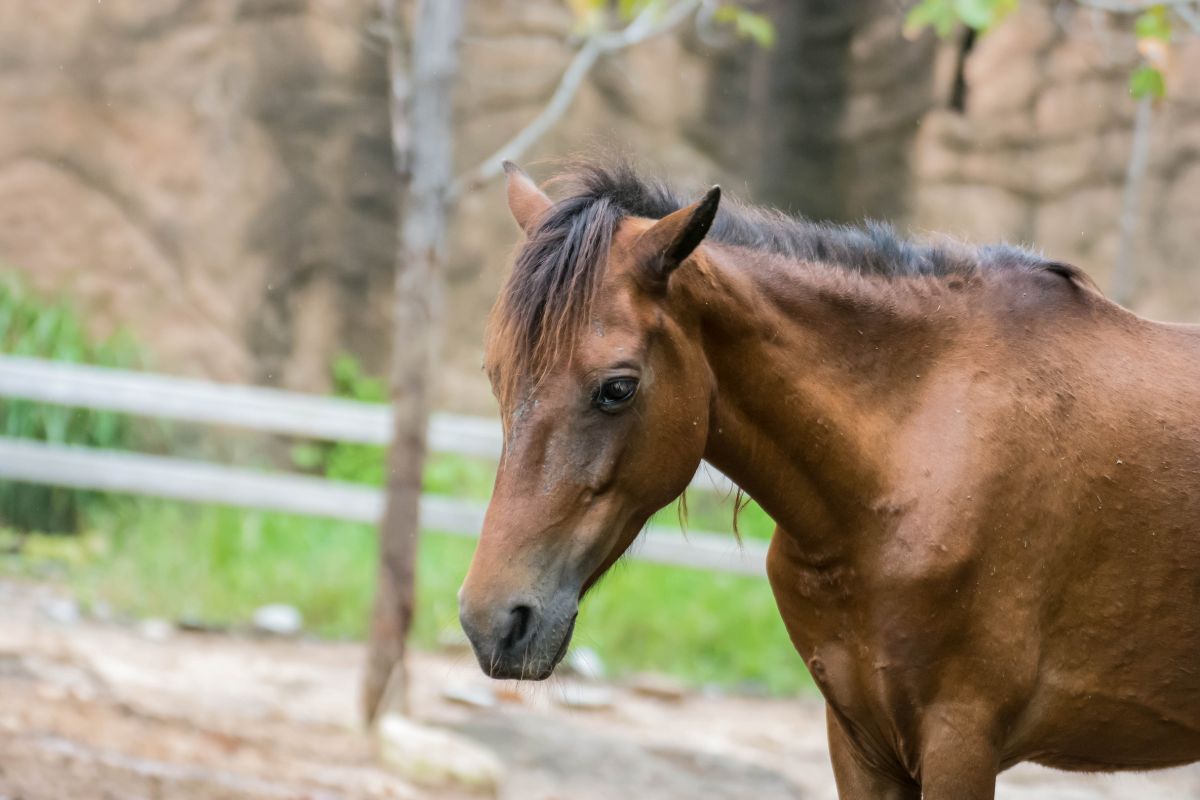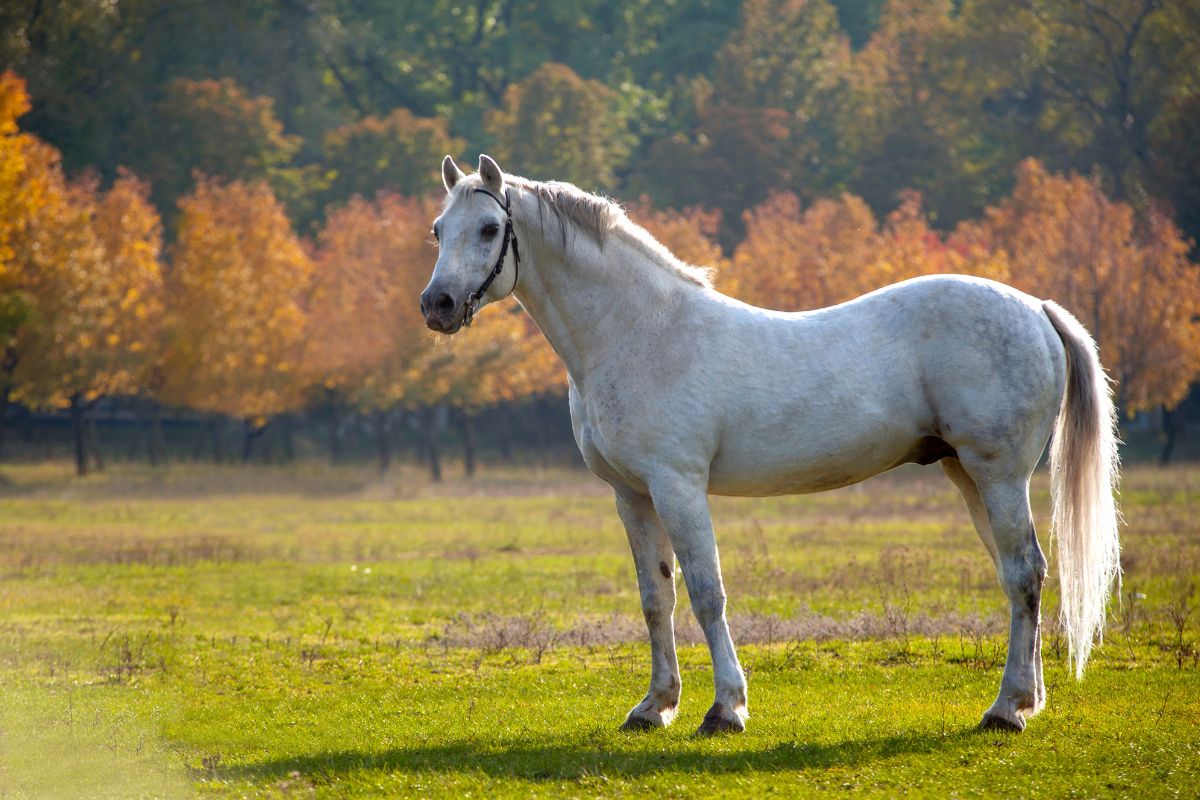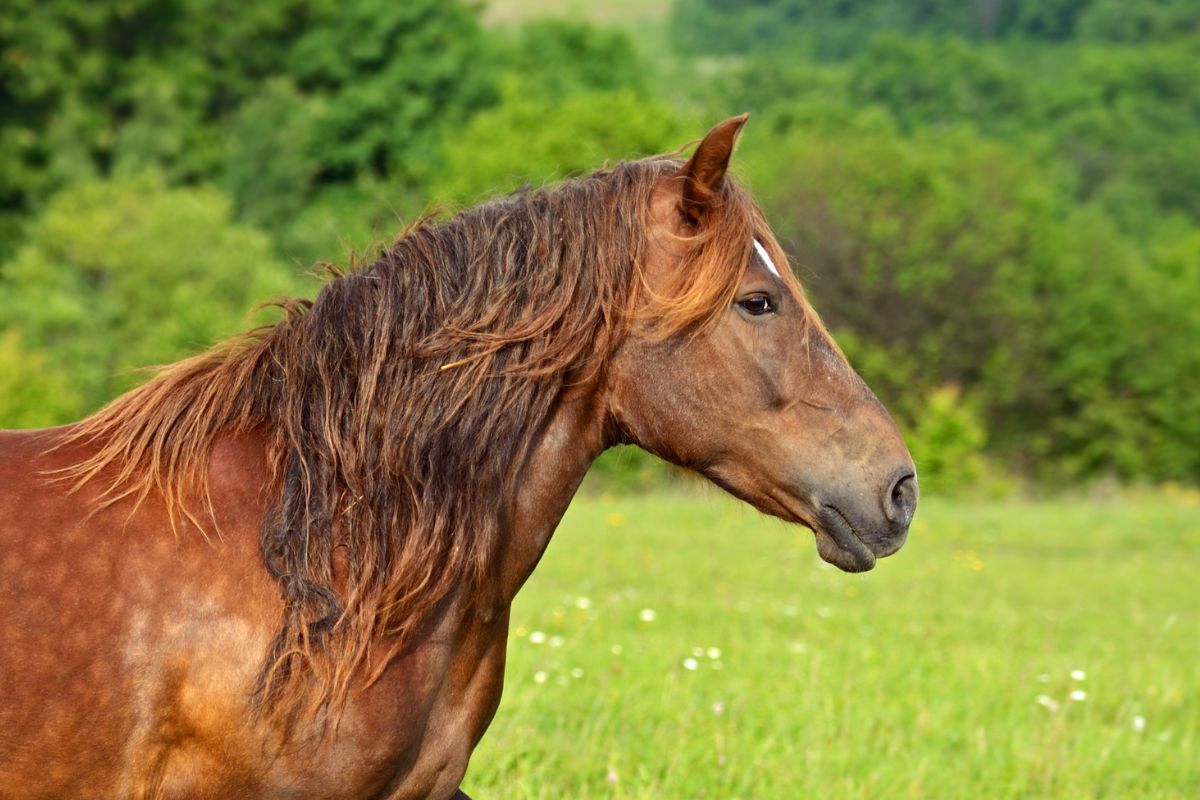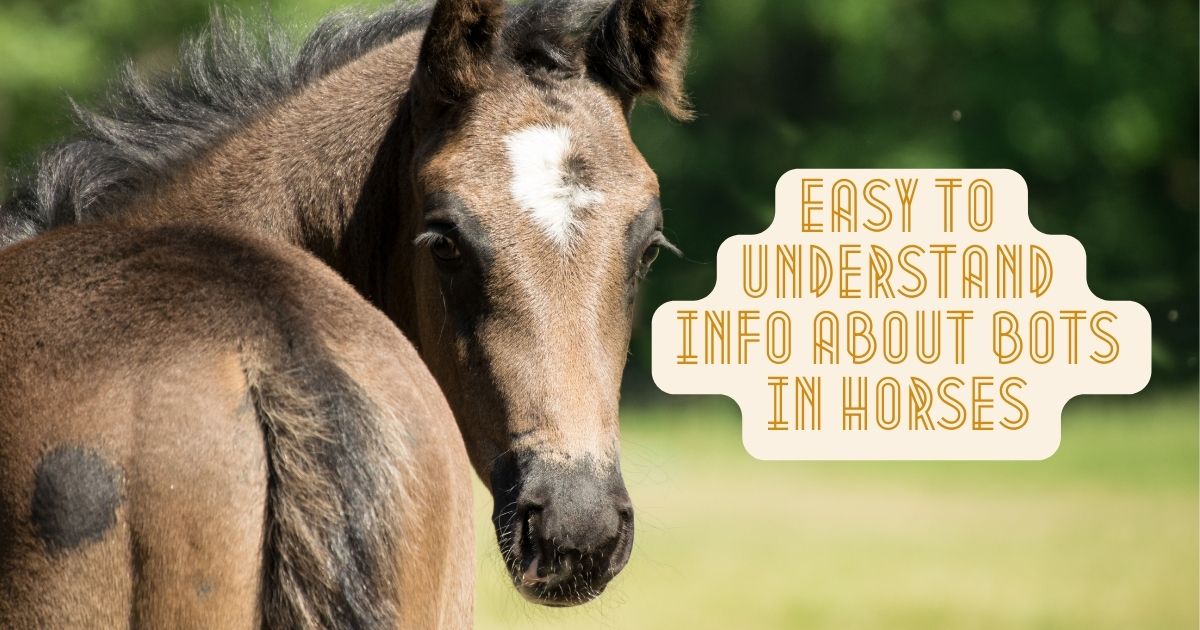Bots and Horses
If you own a horse, you have likely encountered bots in horses at some point. Bots are annoying small creatures, and although they aren’t the most dangerous parasite, they can cause a lot of trouble internally and externally.
But what should you know about bots on horses, what even is Gasterophilus intestinalis, and what has it got to do with bots in horses? Keep reading to find out!

Bot Fly Bite Stages Explained
Despite being a fly-like parasite, bot flies don’t actually bite or sting. They don’t even feed. An adult botfly exists on stored energy from it reaches adulthood until it perishes. However, as they are parasites, they need a host.
These pesky creatures are specialized parasites, meaning they will solely affect mules, donkeys, and, of course, horses. They leave cattle and other livestock alone and do not attempt to use them as hosts.
Adult bot worms and flies are primarily active during the warm months and can be found almost all over the northern hemisphere. However, they tend to disappear once the first frost has set in, which can be helpful when it comes to management. However, this is only a help for the areas that actually experience frost. More on this later on, though!
The bots lay their eggs on the horse’s coat, where the bot fly larvae emerge as soon as they are exposed to warmth and moisture, often emerging in early springtime. The larvae will then migrate to the mouth from different body areas.
Once reaching the mouth, the first larval stage occurs on the tongue, lips, or near the cheek.
Once within the mouth, they develop into their second larvae stage and start migrating to the stomach. As bot fly larvae, they attach themselves to the stomach wall of the host horse and start developing into their third larvae stage. In an adult horse, the number of larvae can vary from a couple of bots to more than a hundred!
What Do Bot Fly Eggs Look Like on Horses?
Botfly eggs on horses are pretty common worldwide. They are typically yellow or white. They are most often around 0.05 inches (0.12 centimeters) long. One female botfly can lay 150 to 500 eggs on one horse if the horse is unlucky.
Once adult bot flies are typically three-quarters of an inch (1.8 centimeters) with the shape of a bee and similar coloring.
Bot Fly Larvae in Horse Manure
Excretion of the bot fly larvae occurs along with the feces. Here they mature into adult bot flies. It is, therefore, a given that botfly larvae in horse manure are a widespread occurrence. It is why it is essential to remove manure from time to time and compost it before using it elsewhere. But keep reading to learn more!

The Three Different Species of Horse Bots
There are three different species of bot flies on horses, with generally quite similar life cycles and all similar in size. All are parasites that need a horse to complete their life cycles. They also all have a life cycle with four distinctive stages: Egg, larva, pupa, and adult fly.
The three types of bots horses can be plagued by are:
- Common horse bots (Gasterophilus intestinalis).
- Throat bots (G. nasalis).
- Nose bots (G. haermorrhoidalis).
Common Horse Bots
You can often find the common horse bots’ eggs on the hose’s forelegs or the flanks. When the horse rubs its muzzle or tongue over the area, the larvae are picked up by the tongue and transported into the mouth. Here they invade the mucosal membranes of the mouth cavity, reaching larva stage two.
The larvae will stay in the mucosa of the mouth for weeks before migrating to the stomach. When reaching the stomach, they attach to the lining and will remain there until next spring or summer, spending their time maturing.
Once mature, the larvae are passed from the stomach and out along with feces. Once outside, they will puppa in the dry earth or feces. After roughly four weeks, the adult common bot fly will emerge and soon after mate. Once mated, the adult female will find a new horse to lay its eggs on.
Throat Bots
Adult throat bot flies lay their eggs near the skin, obscuring the eggs with overlying hair near the jaw or throat. Here the eggs will hatch within three to five days.
Once hatched, the larvae will migrate from the jaw hair and migrate into the mouth. In the mouth, the larvae will burrow themselves into the gum line, which can sometimes irritate the horse.
After a few weeks within the gum line, the larvae will migrate to the stomach. Like the common bot fly, they will overwinter and mature, attached to the stomach lining. Come spring, the horse will pass them with feces to pupae and mature in soil or dry feces before emerging as an adult botfly.
Nose Bots
These eggs tend to be brown, unlike the other types that commonly have white or yellow eggs, and at times they can be slightly bigger. The adult botflies deposit the eggs on the fine hairs near the nose and mouth,
These eggs hatch within two days and burrow straight into the lip and tongue membranes. Here they remain for up to six weeks before they migrate to the stomach.
Once spring comes around, they detach from the stomach lining and migrate to the rectum. Here they reattach themselves near the anus for a short while before dropping to the ground to pupate.
How to Control Horse Bots
Bot infestations can be a plague for any horse owner, so of course, most will be looking to attempt to control the pests. To manage a horse bot infestation, you must break their life cycles. A single life cycle is approximately one year and can break at several stages.
The first thing you can do to attempt to control the infestation is to remove the eggs, preferably daily. A horse owner should be able to remove the eggs using special knives or stones suitable for the job. Another option is to bathe the horse in warm soapy water and scrub the horse thoroughly.
The water must be warm as this will assist an owner in getting the eggs to actually loosen enough from the hair, making them possible to scrub off.
Removing the eggs will,l of course, prevent the larvae from hatching. It is, however, unfortunately, impossible to remove all the eggs as the adult female botfly can hide some beneath the coarse horse hair.
The next option for breaking the life cycle of a horse bot is deworming. When using a dewormer, you should always administer one prescribed by your veterinarian. A veterinarian often prescribes these after the first frost has set in.
The frost kills all current alive adult bot flies capable of laying eggs. The dewormer should then kill the maturing larvae attached to the stomach lining, preventing them from reaching the pupae stage. It is effectively breaking the cycle.
Timing and the correct dosage of dewormer are, however, essential, why you should always seek veterinary consul beforehand.
Can Equine Bots be Transferred to Humans?
Although a rare occurrence, horses can transfer the eggs of botflies to unlucky humans in close contact with a horse. These eggs often come off the skin once a human takes a shower.
But, occasionally, horse bot flies can cause a condition called ocular myiasis. Here the larvae migrate to the eye of a human to burrow.
Another option for the larvae is to burrow underneath the skin of a human to hatch. The burrowing will, understandably, cause a significant amount of irritation, as well as visible sinuous tracks on the skin.
People working with horses during horse bot season should therefore be aware of the risk, even if it is infrequent for horse bots to infest humans.
What Type of Damage Do Bots in Horses Cause?
How much damage bots in horses cause is a frequent source of debate. There is no doubt that the egg-laying females can cause the horses some stress, especially nose bots, as these dart back and forth between the very sensitive hairs to lay one egg at a time. Considering one adult fly can lay up to 150 eggs, this can be quite the ordeal.
It can also cause significant discomfort for the horse when the bot larvae are present within the mouth, tongue, and lips. Carrying up to more than a hundred horsefly larvae in skin regions that are very sensitive can irritate the tissue and even make pus emerge due to the burrowing of the larvae.
Whether an adult horse is bothered by bot flies within the stomach is more debatable. Anecdotal evidence suggests that large quantities of bot larvae within the gastrointestinal tract can cause digestive issues and colic. Clinical symptoms of this can include loss of condition, restlessness, kicking at the belly, loss of appetite, diarrhea, or constipation.
Some evidence also suggests that, although rare, botfly larvae in horses may cause stomach ulcers, inflammation within the stomach, or in severe cases, perforation of the stomach – which can be fatal.
Recent studies do, however, suggests that the signs associated with botflies tend to be more anecdotal than statistically significant. For example, botflies are unlikely to cause constipation as they are not present in the narrowest part of the stomach (the pylorus).
It is also worth noting that the clinical signs can occur for a long list of reasons, meaning the presence of bot larvae could be incidental, as bots are typically assumed to be present in up to 95% of horses’ stomachs. Cause and correlation are, therefore, not a given in the case of bot flies.
However, if your horse is experiencing discomfort within the mouth region or signs of gastrointestinal issues, you should consult a veterinarian.
Equine Bot Belay Management Techniques
While you can attempt to control infestations by removing the eggs or using a dewormer to kill the maturing larvae, proper management and sanitation of the stables can also play a significant role in controlling the horse bots.
Manure
Horse bots mature in horse manure, especially dry manure. Therefore this needs removal and composting before being spread elsewhere. Heating during compostation will kill the maturing pupae and keep them from becoming adult horse bots.
Grazing
Rotational grazing can also assist in keeping the horse bots away, albeit necessary to have extensive areas, meaning this might only be viable for some. Rotating horses away from certain pastures may mean that once the pupae hatch, there are no horses for it to lay their eggs on.
However, it will be necessary to keep horses quite a distance from the old pasture for this to work, as the horse bots can fly and will willingly do so to find a horse.

Final Verdict
Bots in horses are an annoying and troublesome problem for many horses and owners worldwide. In the worst-case scenario, they can cause serious internal problems; in the best, they are just a severe nuisance. It is, therefore, vital to always keep a close eye on your horse and react accordingly if you find it full of larvae.
But luckily, there are options for you and your horse, and together with a veterinarian, you can hopefully keep these pesky parasites at bay!
